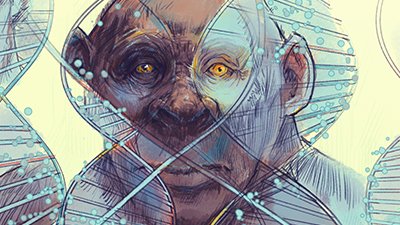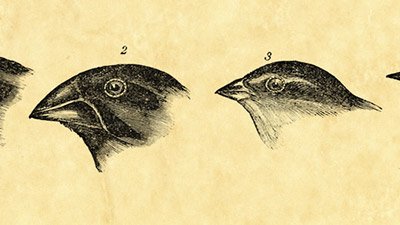
Which is Better: Two Legs or Four?
Reuters: “Chimps on treadmill offer human evolution insight”
Every once in a while a new piece of “evidence” in the evolutionary mythology of mankind shows up that makes many wonder if evolutionists are really even listening to the assertions they’re making. Such stories, admittedly, make the job of reporting the news much more entertaining, but there seems to be no limit to the jumps in logic some researchers will make for the sake of headlines.
The most recent example of this comes from the Proceedings of the National Academy of Sciences. To test the theory that “human ancestors began walking upright because it used less energy than quadrupedal walking,” scientists hooked five chimpanzees and four humans up to facemasks and placed them on a treadmill to measure their “energy expenditure and biomechanics.” They also taught the chimpanzees to walk on the treadmill on two legs and on all fours. (There was no word on how they made the humans walk, but one does wonder if they had them scampering on the treadmill on their hands and feet.)
Every once in a while a new piece of “evidence” in the evolutionary mythology of mankind shows up that makes many wonder if evolutionists are really even listening to the assertions they’re making.
What were the results?
the researchers said people walking on a treadmill used just a quarter of the energy relative to their size compared to chimpanzees knuckle-walking on four legs.
But ...
Overall, the chimpanzees used about the same amount of energy walking on two legs compared to four legs, but the researchers saw differences among the individual animals in how much energy they used based on their gaits and anatomy.
With such “clear” evidence, it’s no wonder that the story has to fill the reader in on the importance of this finding:
“This paper provides strong support for the fact that energy savings played a role in the evolution of bipedalism,” one of the scientists, University of Arizona anthropologist David Raichlen, said in a telephone interview.
If nothing else, this story does emphasize how preconceptions underlie and affect interpretations of the evidence. These researchers, for example, believe that humans evolved from apelike organisms 4–7 million years ago and would likely have found any result to be “strong support” for their theory.
What is not asked, however, is this: if walking upright saves so much energy and non-teleological mutations and natural selection favor energy efficiency, then why aren’t all apes playing hopscotch and dancing the foxtrot? For that matter, why haven’t other quadrupedal species discovered this locomotive marvel? One would expect to see aardvarks ambulating down the street. After all, in the evolutionary worldview, humans are certainly not special.
The researchers also claim to have dug deep into the fossil record and “found anatomical features such as hind legs that might use less energy in locomotion.” The report does not give details as to which fossils they studied, but better energy efficiency in the past certainly does not lend any support to dirt-to-doctor evolution; in fact, it is just as likely that, as a result of the Fall, shuffling about has gotten less energy efficient.
In reality, humans walk like no other creature, since God made man to take a special place on the earth. This report does nothing but emphasize that fact. To read more about this supposed evolutionary transition, see Back problems: how Darwinism misled researchers and our Anthroplogy Q&A.
Remember, if you see a news story that might merit some attention, let us know about it! (Note: if the story originates from the Associated Press, Fox News, MSNBC, the New York Times, or another major national media outlet, we will most likely have already heard about it.) And thanks to all of our readers who have submitted great news tips to us.
(Please note that links will take you directly to the source. Answers in Genesis is not responsible for content on the websites to which we refer. For more information, please see our Privacy Policy.)
Recommended Resources

Answers in Genesis is an apologetics ministry, dedicated to helping Christians defend their faith and proclaim the good news of Jesus Christ.
- Customer Service 800.778.3390
- Available Monday–Friday | 9 AM–5 PM ET
- © 2026 Answers in Genesis



